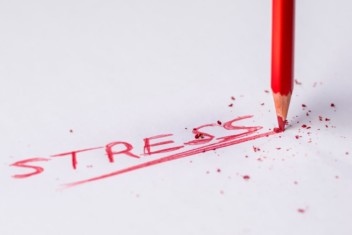While it is common to experience “culture shock” while residing in a foreign country for an extended time, many corporate employees find living in the COVID-19 era a particular and unique kind of culture shock in that it’s a shock to the corporate inner workings of an organization. Businesses and its employees have never been more tested systemically, physically, emotionally, and psychologically, and on this scale. To make matters worse, our social, economic, educational, and health systems have been exhausted by the pandemic to address the needs of their country.
In corporate environments, scant-used words such as “furloughed” and “presenteeism” have become common HR vocabulary alongside “zoom fatigue” and “WFH” (Work From Home). HR and business leaders are scrambling to hold onto what’s good about their corporate culture while balancing business continuity with the social, emotional, mental, and physical health needs of their workforce.
Corporate culture shock plays a significant role in employee engagement, especially when our workforces continue to go through major disruptions at work and at home. According to a Harvard Business Review report, employee disengagement costs employers anywhere from $450 billion to $550 billion every year. Long-term employee disengagement can likely lead to burnout and disability costs, business mistakes, lower profits, and greater employee turnover rates.
The state of today’s workplace requires a purposeful and positive corporate culture to drive and sustain employee engagement. A failure to address the corporate culture shock due to COVID-19 will have grave impacts on your workforce. According to Gallup’s annual reports on employee engagement, research has shown that engaged employees give approximately 57% more effort and are 87% less likely to leave. Therefore, when leaders commit to improving employee engagement, they can expect an increase in earnings per share by as much as 147%.
Luckily for us, adjusting to corporate culture shock is quite similar to adjusting to culture shock in general.
Here are 4 tips HR leaders can do to strategize their culture, inspired by culture transplants who are directly applying these practices to today’s corporate culture challenges.
Be Sensitive To Employees’ Needs
Just as a traveller in a strange new land can lessen culture shock by taking the time to notice and tend to experiences they find personally challenging, a company can soften corporate culture shock by showing the same consideration for its employees.
5 Pillars of Mental Health Framework
According to Dr. Andrew Miki, Chief Science Officer at Starling Minds, the Five Pillars of Mental Health – Health, Job Status, Relationships, Finances, Living Conditions – is a framework that can help businesses appreciate their employees’ current experience. The five pillars are interconnected. A breakdown in one area will destabilize another, causing a domino effect of life-altering changes if not appropriately addressed. Today, it is common for employees to experience at least three significant pillar destabilizations related to the work environment alone (changing job status, financial uncertainty, and the alteration of living conditions while working from home).
Thankfully, technology has stepped in to help employers support their teams as productivity pressures, and pillar destabilizations have created increases in many mental health concerns such as burnout and e-presenteeism. With technology such as online CBT (Cognitive Behavioural Therapy) solutions and face-to-face teletherapy, employees can access help with ease and reduced stigma.
Integrators and Segmentors Framework
Another helpful framework shared by Nancy P. Rothbard in a July 2020 HBR article can increase an employer’s ability to be mindful of employee boundaries and needs. Nancy writes that employees have “preferences – known as ‘integration’ and ‘segmentation.’” “Integrators tend to blur work-family boundaries; segmentors, on the other hand, strive to preserve clear ones.” For example, integrators may be comfortable having flexible work times extending far into the evenings with longer breaks throughout the day. Integrators, however, may value structured work hours that do not impact after-hours work. Understanding where your employees and leaders lie within this framework may provide crucial insights that can troubleshoot or create new culture programs that work.
Create a Shared Purpose – Set Your Cultural Path
Purpose
Cultural transplants in different country cultures have an increased ability to endure hardships with more resilience when they anchor to a clear purpose or vision. This is the “why” or the reason that they have chosen their experience. Similarly, in the corporate world, McKinsey writes that “purposeful companies have been shown to outperform competitors on equity returns and have more engaged employees.” Scientists have also found that purpose, whether in the form of a vision, mission or a purpose statement, is “a critical factor in coping with crisis and trauma” in the corporate environment.
The changes COVID-19 and recent social justice events will most likely require employers to reevaluate their company’s purpose, values, or mission. Reworking the vision in an inclusive manner (surveys, focus groups) will also increase an employer’s chances of creating a relevant vision that people can relate to and hold to while still weathering the storm of change.
Communicate, Communicate, Communicate
A workforce experiencing impacts in multiple pillars of mental health (Health, Job Status, Relationships, Finances, Living Conditions) is a workforce that requires constant and repetitive communication that does not fall within the standards of their organizations. Many leaders will need to adjust quickly to communicating more frequently, with greater transparency, despite the uncertainty surrounding them.
While diversity and inclusion specialists alongside mental health programming expertise can assist in navigating new sensitivities concerning communication, Heather Brunner, CEO of WP Engine as quoted in HBR, also emphasized, “You must invest in clarity and become a chief repetition officer. Don’t stop until everyone can repeat exactly what you are doing, why you are doing it, and what success looks like.”
Surveys gathered by corporate culture experts, Culture Amp during COVID-19 have shown that strong, timely, clear communication has created and enhanced success for many corporate cultures despite the many obstacles and unknowns. As a rule of thumb, experts note that the most “Effective Frequency” for communication is repeated seven times at a minimum.
Maintain and Create New Rituals
One of the hardest parts of culture shock is giving up favourite rituals of home and embracing what may be uncomfortable, such as learning new rules in a foreign country. Incorporate cultures, the jolt of deeply entrenched rituals vanishing due to COVID-19 has been felt around the world – especially by companies that are dependent on in-person interactions. As face-to-face interactions and meetings aren’t permitted, team members in many corporate cultures are coming together with new bonding rituals through screens.
There is hope for corporate rituals, however. Rituals that are deliberately structured, aligned to company values, and possess the company’s renewed sense of purpose, have been shown to “serve as pillars of psychological safety and normality,” according to a report by McKinsey. These new rituals or refurbished old ones can be a powerful new method of communicating “how things are done around here.”
An example of a corporate ritual that can ease corporate culture shock and support the vision of moving forward together is the process of welcoming people back to work. “The University of Virginia, for example, offers to return students a welcome-back kit that includes masks, hand sanitizer, and a tool to help open doors and press buttons.”
Summary
In coping with and orchestrating change, it is important to be kind to yourself and the patient, as Mark W. Johnson and Josh Suskewicz caution in their July HBR article. Any new initiative will likely have leaders grappling “with the pitfalls of causal ambiguity (the fact that what drives good results in one context may very well not in another).” So to ease corporate culture shock in the COVID-19 era, take a page from culture shock veterans around the world and cultivate sensitivity to employees’ experience, a shared purpose, constant communication, and new or refurbished, relevant corporate rituals.




